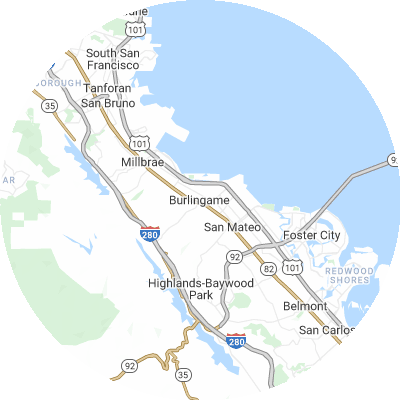Signs You May Need Gutter Guards
Gutter guards aren't required for all homes, but the signs of clogged and overflowing gutters are clear. Signals of ongoing gutter troubles are:
- Leaky joints or seams where water leaks out of gutters
- Soggy ground or visible erosion patterns around your foundation
- Mold growth, peeling exterior paint, or interior water stains on walls near gutters.
- Frequent clogs that cause overflow and water to spill over gutters
- Visibly damaged, sagging, or misaligned gutters that no longer correctly direct rainwater
How To Choose a Gutter Guard Installer
Assess Their Experience
The right installation company will have extensive experience, including many years in business and experience with numerous brands and models. Companies with experience can properly measure and fit gutter guards to meet your distinct needs. Ask how long a company has been doing installations and request referrals from local customers.
Verify Proper Licensing and Insurance
Always ensure professional gutter guard installers are properly licensed, bonded, and hold general liability insurance and workers compensation. This protects you from liability for any injuries or accidents that could occur. Ask to see current licensing and insurance papers when communicating with potential providers.
Choose Reputable Brands
Seek out companies that provide leading reputable gutter guard brands such as Gutter Helmet and LeafFilter. Be wary of companies that only carry generic no-name or their own off-brand guards, as these likely lack the rigorous testing of larger brands.
Seek Custom Fit Services
For optimal performance, gutter guards need to be sized and cut on-site to match your specific gutter setup. Choose a company that custom measures and trims guards specifically for your home, rather than using generic guards. Accurately fitted guards will leave no gaps for debris to get stuck.
Examine Warranties
Leading gutter guard companies are typically backed by 20-year or lifetime warranties that cover clogs, leaks, rust, and other defects. Before picking a provider, read over its warranty terms for materials and workmanship guarantees. Warranties are the best way to protect your gutter investment.
Check Reviews and Referrals
It's a good idea to look at online reviews on sites like Yelp, Google Reviews, or the Better Business Bureau (BBB) to learn more about customer experiences. You can also ask your neighbors to suggest quality gutter guard businesses in your area. When researching potential providers, it's best to opt for companies with consistently good reviews rather than just one or two reviews.
Types of Gutter Guards
The six typical gutter guard types are as follows:
- Foam guards are lightweight and easy to install. This type of guard catches debris on the foam and keeps it out of your gutter. On average, you can expect to pay $2.46 per linear foot for foam guards.
- Brush guards are exactly what they sound like: large brush bristles that sit in your gutters and catch debris while letting water through. On average, you can expect to pay $4.05 per linear foot for brush guards.
- Screen guards have large holes that allow water to pass through while blocking debris. On average, you can expect to pay $4.35 per linear foot for screen guards.
- Mesh guards stop debris but let water through. Mesh guards have even smaller holes than screen guards. They're durable and let debris slide off as opposed to sitting on top of the gutters. On average, you can expect to pay $4.10 per linear foot for mesh guards.
- Micro-mesh guards are generally the most effective. Micro-mesh guards have smaller holes than regular mesh guards and let even less debris through. On average, you can expect to pay $5.18 per linear foot for micro-mesh guards.
- Surface tension guards, also called reverse curve guards, use surface tension to encourage water to flow into gutter system while debris slides off. Generally, they are visible from the ground. Surface tension guards cost around $3.20 per linear foot.














